AcroYoga
Acro, Partner Acrobatics and More
A simple definition for the world acrobatics is ‘the performance of extraordinary human feats of balance, agility, and motor coordination’. This broad term allows us to easily classify all our practices under the term acrobatics: yoga, slacklining, conditioning, handstand, and of course acroyoga.
In a sense, what differentiates each practice is the method and the goal of the practice itself.
In the following pages we explore what is AcroYoga, the goals, practice styles, elements and how to learn acro.
Why AcroYoga?
Slackline Yoga allows us to test our yogic skills with ourselves as we move our practice to an unstable surface. Slacklining allows us to further explore our reactions, how we speak to ourselves, how we react to success, failures, happy moments, and stressful situations.
AcroYoga brings an additional challenge to our practice: another person. The addition of another individual provides us with the opportunity to test our yogic principles as we relate to others. Above all, acro provides us the opportunity to practice our verbal and non-verbal communication skills.
While we may refer to our practice as simply ‘acro’, we often do refer to our practice as AcroYoga, because our intention through this practice is to foster union, connection and further understanding of our human potential.
Goals of the Practice
- Foster connection, co-creation and shared balance
- Improve communication skills
- Let go of preconceived notions of what is or isn't possible
- Push the limits of our true potential
- Develop strength, flexibility and body awareness
- Have fun!
Practitioner Rolls
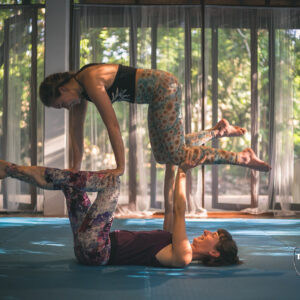
Base

Flyer
The flyer is the person being elevated off the ground by the base.
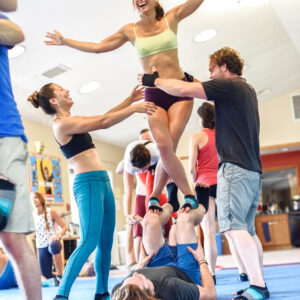
Spotter
The spotter has the very important role of mitigating potential injury. Their primary goal is keeping the flyer safe. Secondary roles include keeping the base safe and providing alignment, balance and strength assistance.
Different Practices
There are many different styles of acro. When differentiating between them, we can start by identifying their main form: restorative or dynamic.
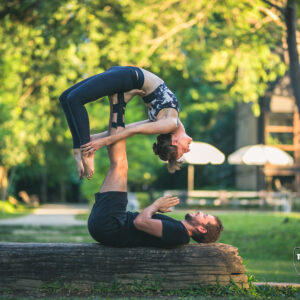
Restorative
Restorative acro, often referred to as ‘therapeutic’ or ‘lunar’, incorporates elements of massage, stretching and deep relaxation. During this practice the flyer relaxes the body while is guided by the base between different poses.
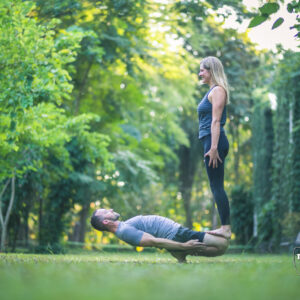
Dynamic
Dynamic acro, often referred to as ‘acrobatic’ or ‘solar’, involves both the base and the flyer actively contributing to the strength, balance and movement.
Our practice is a form of dynamic acrobatics. And the rest of this section – while some of the information can be applied to restorative acro too – it is mainly written with dynamic acro in mind.
Basing Styles
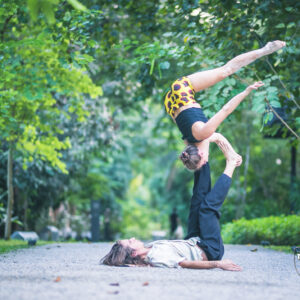
L-basing
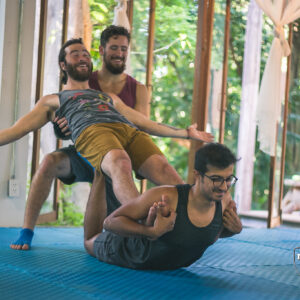
Belly Basing
During belly basing, the base is lying prone, with their belly on the floor.
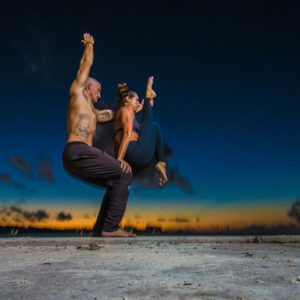
Standing
Refers to the base standing position.
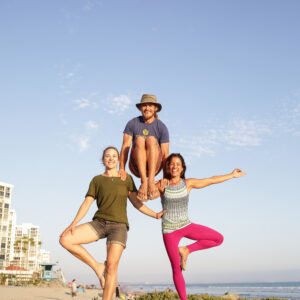
Multi Base and/or Flyer
Multi base and/or flyer refers to poses that require the contact, shared weight and balance of more than one base or flyer. There is no limit to possible combinations.
Elements of the Practice
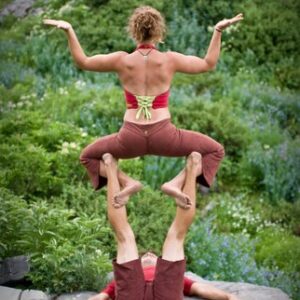
Static Poses
The basic component of acro are static poses. A static pose can be defined as a pose held for a determined amount of time. It includes an entrance and exit to the pose usually originating and ending on the ground.

Transitions
Transitions are ways to connect static poses without the need to exit or return to the ground.
Flows
A determined set of transitions connecting static poses without the need to exit or return to the ground.
Washing Machines
A flow that starts and ends in the same pose. Often practiced repeatedly with the goal of generating smooth movements and speed.
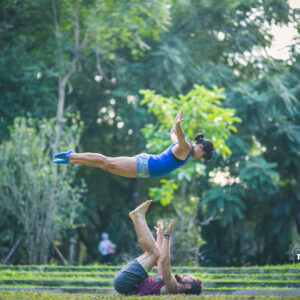
Pops
Pops are explosive transitions in which the flyer and base disconnect all or some contact points at once. It involves a throw and a soft catch.
Whips
Whips are dynamic transitions where the flyer slides, often quickly, around the bases main point of contact.
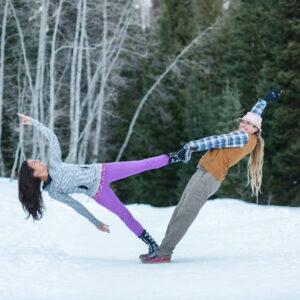
Counterbalances
A counterbalance is a static pose, attained by balancing the opposing weights of the base and the flyer. Counterbalances are possible in all basing positions.
Practice Styles
Here are a few of the most commonly use terms.
Acrobatic Gymnastics
While acrobatic gymnastics started mainly as a standing acrobatics practice, nowadays the term ‘acro’ is loosely used to defined a partner practice where one person lifts another.
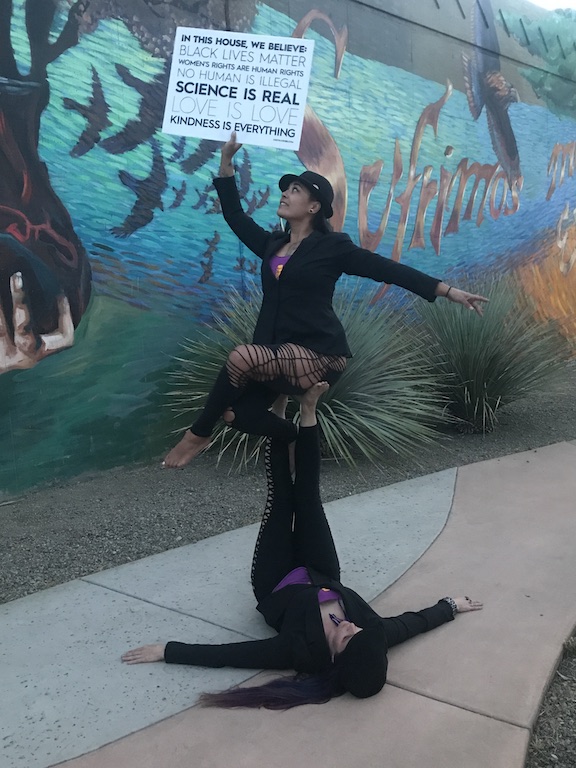
AcroYoga
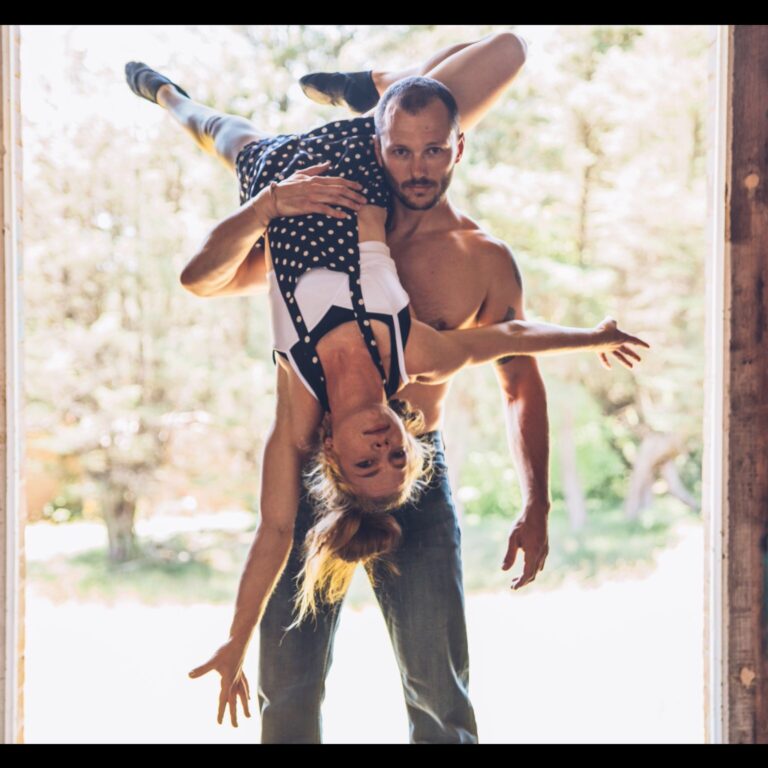
Adagio
Cheerleading
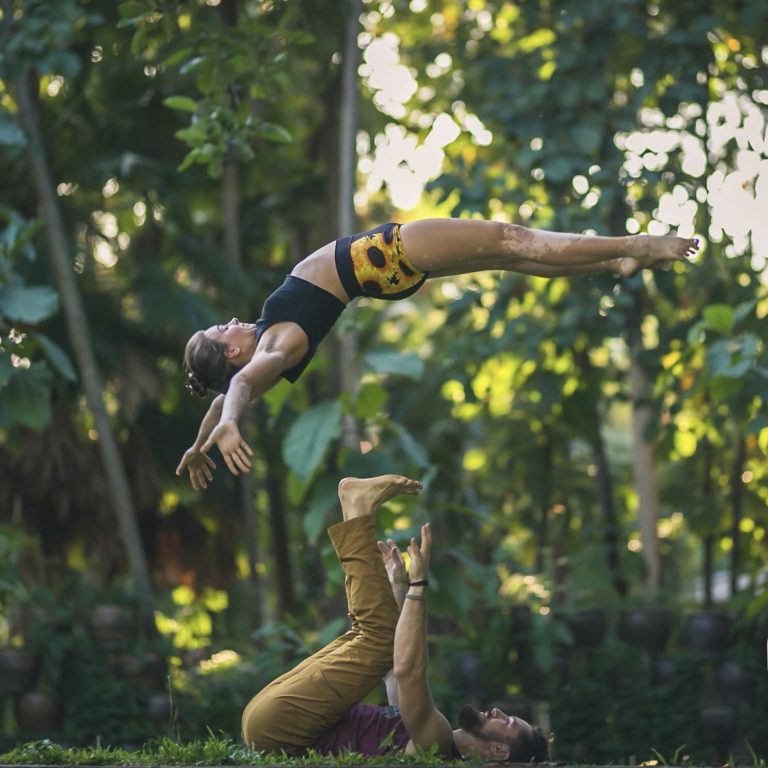
Icarian
Risley
Also known as human foot juggling. Risley is a form of L-base partner acrobatics derived in the circus by Richard Risley Carlisle. It is characterized by the base’s use of their feet to quickly and continuously spin the flyer.
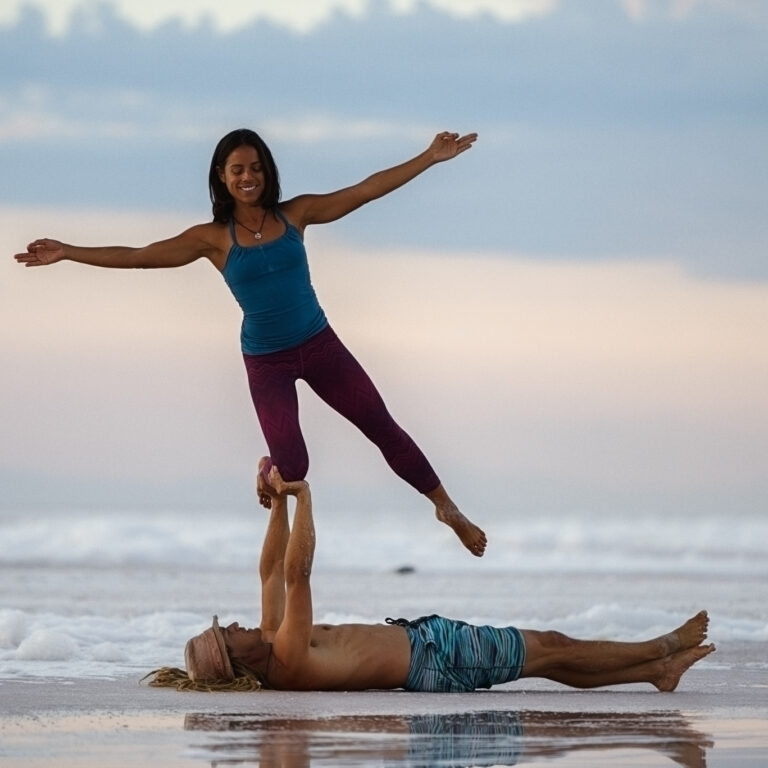
Slackro
It developed around 2010 when we – the YogaSlackers – started practicing traditional slackline poses and moves on another person. It can be practiced both in L-base and standing acrobatics.
Slackro is characterized by empowering both the base AND the flyer with an active role in their balance. This is unique and differs from traditional partner acrobatics where the flyer stays very still, doesn’t move, and the base is in control of the balancing. The combination of acro and slacklining creates another level of body awareness that teaches greater balance and connection.
Training and Practice
-
Formal Classes
During classes you can expect a teacher or coach to provide safe progressions, spotting drills and clear expectations on how to practice. Classes allow room for modifications based on injuries and skill level based on the teacher's guidance.
-
Open Training
Open training is the space to train new and old skills within one group or groups that follow a cohesive approach. Working together, understanding the risk, and taking safety precautions, the training partners take time solidify or learning new skills through practice and repetition.
-
Jam Sessions
Jams are a space to connect with the community and practice low risk material that can be safely shared with other participants. The main intention being connecting with the community, while playing and having fun.
Individual and community safety can be compromised when practitioners misunderstand and therefore misuse classes, jams and open training spaces. Before joining an event check with the teachers, organizers or people that frequent the space to clarify the intention and expectations.
Clarifying your intentions ahead of time and fostering an atmosphere of accountability for all individuals involved can alleviate safety concerns.
On the next session we address in more detail how to increase safety in the acro practice.


